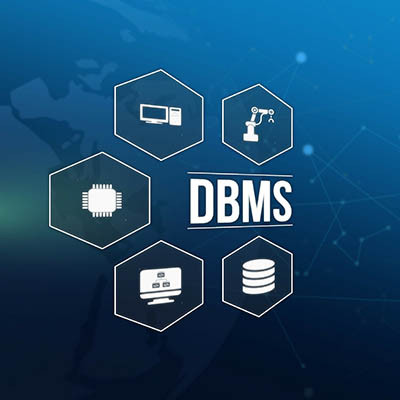Do you feel like you’re walking a tightrope between getting things done and maintaining the security of your network and data? You’re not alone. Ultimately, we’re all trying to be as productive as possible, and we want to use all the cool collaboration tools, work from anywhere, and get things done fast.
Telesys Voice and Data Blog
Every business owner understands the concept that time is money, but are you one of the few who know exactly how and where it is chipping away at your bottom line? One thing that is often cited is productivity, or often, the lack thereof. We believe that understanding these numbers is the first step to mastering them.
If you’re like most professionals today, you know that writing emails can be a surprisingly time-consuming task. You want to sound professional but not stiff, friendly but not casual, clear but not robotic. What’s more, when your inbox is already overflowing, the last thing you want is to stare at a blinking cursor trying to craft the perfect response.
Running a business today without technology is pretty much impossible. Whether it’s email or messaging for communication or point-of-sale software for stores, every business depends on tech. Where there’s tech, there has to be someone to manage it.
QR codes are a handy way to direct someone to the right place online, like your business’ website, but did you know that they are also pretty easy to make? Let’s go over how you can whip up your own with the help of Microsoft Excel.
Running a small business is no easy feat, especially when it comes to managing supply chains. You’ve got to keep track of suppliers, shipments, inventory, and customer demands—all without losing your mind. Luckily, technology is here to help. Let's break down some of the key tech tools that small businesses are using to make their supply chains smoother and more efficient.
Business technology can sometimes seem like a hedonic treadmill: you maintain a baseline level of operation with your IT, but it will inevitably fail, leaving you in the tough situation of having to replace it. Today, we want to help you get ahead of the curve a bit with a technology needs assessment. We’ll discuss the benefits of a needs assessment, as well as what it focuses on both now and in the future.
Have you ever searched for something on Google, played a game that remembers your high scores, or checked your Instagram messages? These apps feel smooth and efficient thanks to something called a Database Management System (DBMS) working quietly in the background. In this month’s newsletter, we’ll explore what a DBMS is, how it works, and why it’s essential for creating a seamless user experience.
Downtime can be lethal to businesses, not only because too much can lead to failure, but it can easily waste a lot of your team’s time as everyone shifts gears to find a solution. This is why is it best to avoid it as often as possible.
That’s why we’re discussing three of the most prevalent causes of downtime, and what you can do to prevent them.
You might have noticed that some of your younger workers are leaving your business much earlier than you might expect them to. This could be because of a phenomenon called “shift shock,” which examines employee engagement and satisfaction. Let’s consider how shift shock could potentially harm your business.
Collaboration is the key to many businesses' success and through the use of technology, your collaborative success could improve exponentially. The problem becomes how to determine what kind of collaboration tools work right for your situation. Today, we’ll go through two different types of software that can help improve your organizational collaboration.
Ask anyone that runs a business and they’ll tell you that it’s not one thing, it’s dozens of interconnected tasks that make up an efficiently functioning business. The smaller a business is, the more that the people that work in it need to do. This month, we wanted to discuss how even small investments in technology can make a massive difference in the way a business operates.
All small business owners are searching for ways to ensure their organization's long-term success. The truth is that it takes a dedication to building strategies that allows your business to get in the fast lane and stay there; and these strategies aren’t always easy to find. Let’s discuss how leaning into solid technology investment can help bring you closer to your goals.
Productivity is the metric every business uses to determine the health of their business, how their employees are working, and how projects are being handled. Some organizations have found it helpful to gamify their productivity to incentivize efficient and thorough individual and team performance. Let’s take a look at gamification, why it is so effective as a strategy, and some of the pitfalls that it can cause.
There is one question that workers don’t hear enough, and if they do hear it, it is usually said in passing as a rhetorical question. That question is:
“How are you doing?”
Technology is a big part of doing business for a lot of organizations. One issue that comes into play is that managing that technology can get a little much for a small organization or one that doesn’t actively have some type of plan of how to organize their IT in a way that can keep that technology from being a risk or a problem. This month, we’ll take a look at a couple things that can be done to clean up your IT and make it be more of a benefit to your organization.
Laptops are pretty great, I think we can all agree, simply due to their portability. Having said that, the one-screen situation that laptops bring with them can certainly get in the way of productivity—particularly for those who are used to using more than one. Let’s discuss why an additional display is so helpful, and what your options may be for hooking one up to your laptop.
Sometimes you might encounter situations where your network is limited in the amount of data it can process at any given time. The unfortunate truth is that it can be difficult to identify exactly what the problem is that is causing the slowdown, but one of the most common issues—the network bottleneck—is a pretty safe bet. But what exactly is a bottleneck, and what can be done to solve it?
When was the last time you actually had a decent experience working with a vendor? Depending on who you are trying to contact and work with, it can either be an extraordinarily pleasant or an extraordinarily painful experience. Wouldn’t it be nice if you didn’t have to work with vendors at all? What if you could just contact a trusted resource who could handle everything for you? Well, you’re in luck; that just so happens to be what vendor management is all about!
With so many technical terms to know and processes to understand, one might think that the only possible way to take care of your IT infrastructure is to hire professionals to monitor and maintain every aspect of it. While there is certainly a lot of truth to this statement, and working with professionals presents a ton of value, it doesn’t take a genius to implement small, common-sense practices that can compound over time.
Mobile? Grab this Article!
Tag Cloud




















